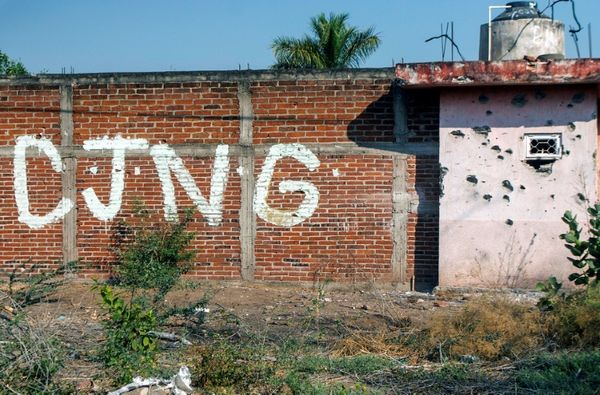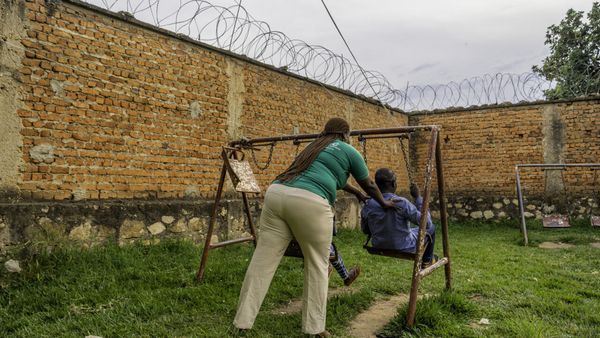
In the fog of war, truth is often the first casualty, and the 2025 India-Pakistan conflict is no exception. Following the terror attack in Pahalgam, a second front opened almost instantly: an information war, carefully choreographed by Pakistani disinformation networks.
While the Indian military launched Operation Sindoor to retaliate against Pakistan-sponsored terrorists, the digital battlefield lit up with a barrage of falsehoods – deepfakes, old footage repurposed as current, and fake accounts aimed at shaking public confidence and global perception.
At the centre of this effort was a now-familiar Pakistani playbook, honed over decades and repurposed for the age of AI.
This tactic isn’t new though. In 2019, after India’s Balakot strike, Pakistan’s Inter-Services Public Relations had similarly invited international media to tour the bombing site to control optics, deny damage, and project victimhood. In 2020, nearly 500 social media accounts, most of them from Pakistan, added to the tension surrounding the Galwan Valley conflict between India and China.
The Shivangi Singh hoax
Within hours of India’s airstrikes in response to Pakistani aggression in the early hours of Saturday, several Pakistani social media handles began claiming that Indian Air Force pilot Shivangi Singh, India’s only woman Rafale pilot, had been captured in Pakistan. Her photos and random old videos were posted with captions declaring she had been detained in Sialkot or Pakistan-occupied Kashmir.
The story was entirely fake – debunked promptly by both the Indian Air Force and PIB Fact Check. But the lie spread far and fast, amplified by accounts with large followings, some masquerading as Indian users to appear more credible.

Old videos circulated as new
One verified Pakistani X account – @pinaka_av15, pretending to be an Indian under the name Colonel Hathi – had been systematically pushing false narratives since the retaliatory strike.
On Saturday morning, he shared a video of two women crying with tilak on their foreheads. “Heartbreaking, I can’t hold back my tears seeing these innocent girls cry. After Pakistan’s attack, there is blood, fire, panic, and an atmosphere of grief everywhere. Modi ji, aap Operation Sindoor ke naam par sindoor he mita rahe ho,” he posted with the hashtags #IndiaPakistanWar, #Pakistan and #Banyan_Al_Marsus.
Using open-source intelligence tools, Newslaundry traced the video to Tribhuvan International Airport in Kathmandu. The original footage shows two Nepali women tearfully bidding farewell to their sister. One of them can be heard talking in Nepali, asking her sister to call their father.


In another post on Saturday morning, he tweeted a video of a structure on fire and wrote, “Bharat ne Pakistan par sirf drones attack kiye the, lekin badle ki aag mein jalte Pakistan ne hum par missile daag diye. Hamara media yehi aag aur khoon ka dariya chahta tha jo ise mil gaya, lekin is tabahi ko Bharati janta ki agli 2 generations bhi nahi mita sakengi.The worst time we have ever faced. Shame on you Pakistan.”
The post gathered over 2,300 retweets and 7,500 likes within just five hours. However, a Newslaundry fact-check using OSINT tools revealed that the video was actually of a pro-monarchy protest in Nepal in March 2025, when demonstrators set a building on fire.
On May 8, a wildfire from Chile was used to claim Pakistan had bombed Indian military installations in Amritsar.
Impersonation campaigns
Fake Indian defence personnel profiles were also deployed. One handle pretended to be Commander Abhilash Tomy, using his name and photo to lend weight to fabricated stories:
A video from a Ludhiana protest was framed as anti-India sloganeering by Sikhs. In truth, it was from a protest against a bio-gas plant on April 26.
A mock drill at a railway station was used to suggest fear among Indians.
Another fake handle, @GenSanjay_K, shared a widely circulated bombing video, claiming Nagrota airbase was destroyed. The video had no connection to India – it had been used earlier to depict the Sudan war.

Pakistani media also joined in.
Pakistan’s state-run Associated Press of Pakistan published entirely fictitious claims, from the JF-17 Thunder jets destroying India’s S-400 air defence system, to India launching six ballistic missiles, five of which landed in Amritsar and one in Adampur. The claim about Amritsar appeared to sow discord within India.
Even ISPR DG Lt Gen Ahmad Sharif Chaudhry parroted the claim about Indian missiles striking Indian territory on national TV – statements debunked by Indian authorities and fact-checkers. He also claimed that Pakistani armed drones hovered over Delhi – a bizarre claim amplified by the Pakistani media.
Anatomy of a digital offensive
According to Gagan Jain, a cybersecurity and OSINT researcher who leads threat intelligence platform FalconFeeds, the effort was coordinated and persistent.
According to an analysis by the firm, Jain said, the disinformation campaign wasn’t limited to social media, with mainstream news channels and WhatsApp forwards circulating misattributed photos and videos. Jain said the analysis hinted at a wave of coordinated hashtag campaigns, driven primarily by accounts of Pakistani origin. The most viral among them – #IndianFalseFlag – was posted over 14,000 times. Many of these posts directly targeted Indian Prime Minister Narendra Modi, accusing him of orchestrating the Pahalgam attack to justify military retaliation. Some crossed into disturbing territory: AI-generated videos twisted footage of mourning women into dance clips, while doctored visuals portrayed Modi in chains, falsely claiming he had been arrested by Pakistani authorities.
Jain said that what was “really surprising was the comeback of an old internet hoax – the ‘Dance of Hillary’ virus. It first did the rounds back in 2016, claiming a file called tasksche.exe could wipe out entire systems. Even though it’s been debunked for years, this time, it was allegedly unleashed by Pakistani hackers…the hoax was baseless, but it served its purpose: stirring panic, especially among older internet users already on edge.”
“These campaigns weren’t just sloppy pranks or political mudslinging. They were part of a calculated strategy to erode trust, inflame nationalist passions, and obscure reality. In a region with a nuclear backdrop and a history of flashpoints, the risks are enormous.”
Lt General Rajendra Nimbhorkar (retd), who played a key role in the 2016 surgical strikes as a Corps Commander in Nagrota, said citizens should rely solely on official sources for information to avoid falling victim to false narratives. “Equally important is the role of the media. News channels must exercise restraint. They cannot behave like misguided missiles, broadcasting unverified or sensationalised content. If a media outlet makes a claim, it must be backed by facts. And if they fail to justify their reporting, they must be held accountable.”
“Disinformation is a powerful tool often employed by adversaries, and it serves as a potent weapon in times of conflict. We certainly saw its presence in the India-Pakistan standoff following the Pahalgam terrorist attack. While there are mechanisms in place to counter such disinformation, it still poses a significant challenge for the common public during periods of tension.
Former Navy spokesperson Captain DK Sharma (retd) said the Indian government “acted promptly this time” in countering disinformation. “PIB and MIB fact-check handles on X were very prompt…and many vigilant individuals were independently debunking fake news and propaganda. However, despite these efforts, disinformation still manages to create a degree of panic during such sensitive times…that’s why public awareness is crucial.”
As sections of the mainstream media fuel misinformation, Newslaundry will continue to bring you credible analysis, verified updates, and ground reports on Operation Sindoor. Power our journalism with a subscription.
Newslaundry is a reader-supported, ad-free, independent news outlet based out of New Delhi. Support their journalism, here.







